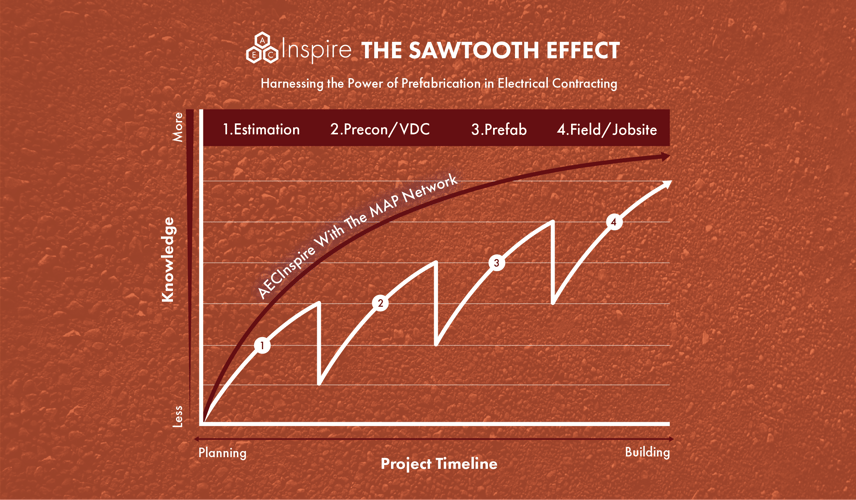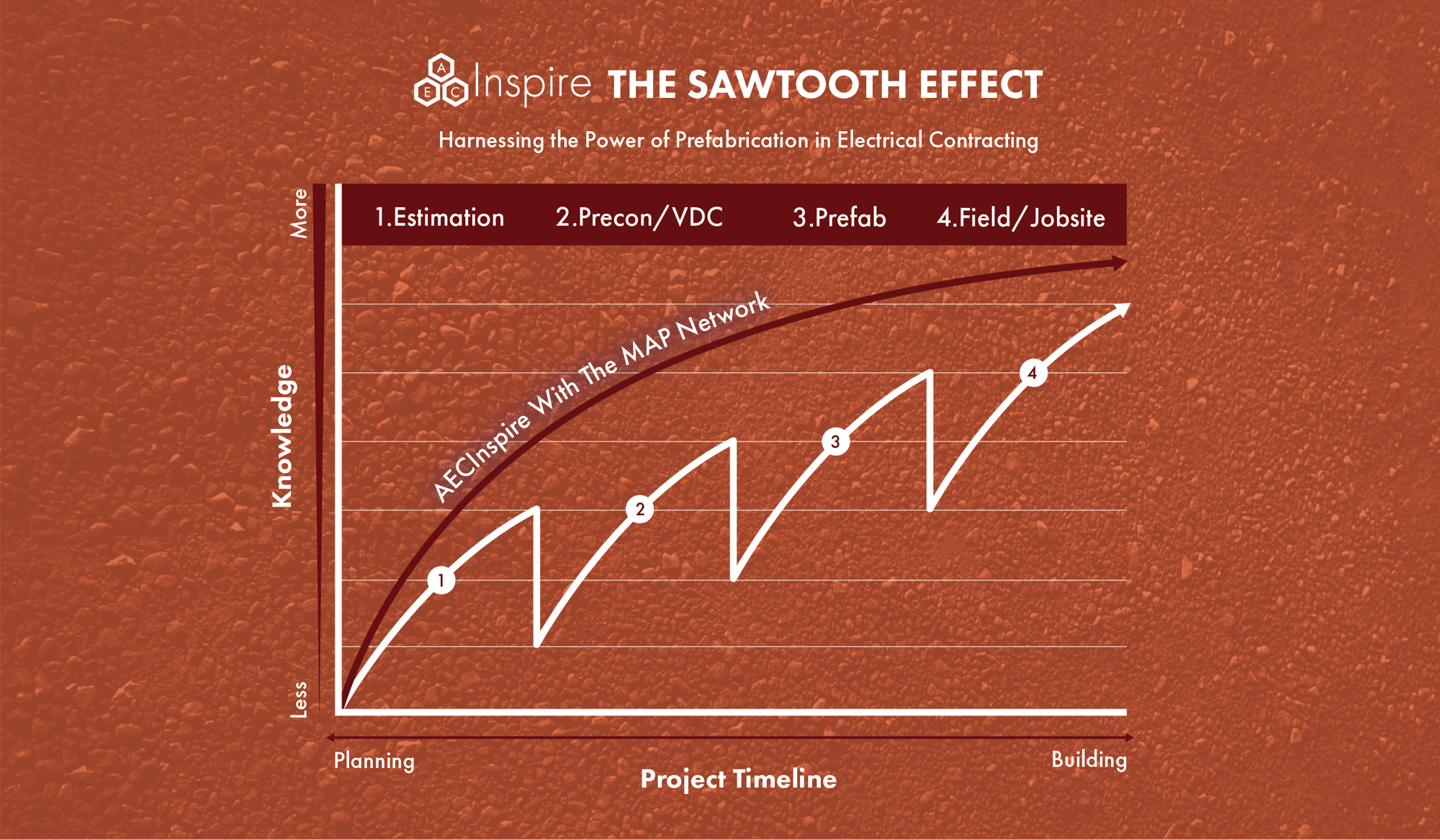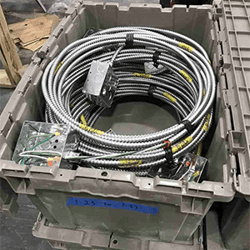Harnessing the Power of Prefabrication


Harnessing the Power of Prefabrication in Electrical Contracting
In this second installment of our series addressing the sawtooth effect in electrical contracting, we delve into the strategic advantages of prefabrication. As the construction industry grapples with labor shortages and rising costs, embracing prefabrication is not just a matter of innovation—it’s essential for survival and growth.
The Advantages of Prefabrication
- Efficiency and Speed: Prefabrication shifts much of the construction work to controlled factory environments, where components are assembled and then shipped to the construction site ready for installation. This approach streamlines the building process, drastically reducing the time spent on site.
- Cost Effectiveness: The controlled environment of a factory allows for more precise construction with less waste and fewer onsite errors, translating into direct cost savings and reduced material use.
- Improved Quality: Components manufactured in a factory setting benefit from stringent quality controls and can be produced under conditions that are not feasible on a construction site, leading to higher quality and consistency.
- Reduced Labor Dependency: With major parts of construction occurring offsite, the demand for onsite labor decreases, which is a significant benefit in regions experiencing skilled labor shortages.
- Enhanced Safety: Reducing onsite construction activities lowers the potential for workplace accidents, promoting a safer work environment.
Implementing Prefabrication
- Early Planning and Design Integration: For prefabrication to be successful, it must be integrated from the project’s design phase to ensure all prefabricated components fit seamlessly into the final construction.
- Collaboration with Manufacturers: Working closely with manufacturers who provide prefabricated solutions ensures that the components meet specific project requirements and are delivered according to the project schedule.
- Leveraging Platforms like the MAP Network: As highlighted in the article "Embracing the Future of Construction," the MAP Network offers a robust framework for integrating prefabrication into existing workflows. This network facilitates access to high-quality prefabricated components without the need for contractors to invest heavily in their own prefab facilities, making it easier to adopt these innovations.
- Training for Installation: Adequate training is essential to ensure that the workforce can efficiently handle and install prefabricated components, which are often different from traditional building materials.
Real-World Applications
An example from the MAP Network showcases how prefabricated in-wall boxes and wiring systems are used in large commercial buildings. Traditionally, these installations require significant manual labor and coordination. By using prefabricated solutions, components arrive on-site ready for installation, significantly reducing labor hours and minimizing errors.



Conclusion
The shift towards prefabrication represents a transformative approach to construction, offering numerous benefits that extend beyond simple cost savings. With industry support structures like the MAP Network, as discussed in "Embracing the Future of Construction," electrical contractors are well-positioned to adopt prefabrication and enjoy its myriad advantages. This innovative approach not only meets the immediate needs of reducing labor dependency and costs but also sets a new standard for quality and efficiency in construction projects.
Engage with Us:
See the links below to all of the Sawtooth Effect series posts:
- Sawtooth Linkedin Article: Overcoming the Sawtooth Effect: A Comprehensive Guide for Electrical Contractors
- Sawtooth Series 1 of 4: Enhancing Communication to Combat the Sawtooth Effect
- Sawtooth Series 2 of 4: Harnessing the Power of Prefabrication
- Sawtooth Series 3 of 4: Implementing Lean Construction Principles to Streamline Electrical Contracting
- Sawtooth Series 4 of 4: Building a Culture of Continuous Improvement

.png?width=210&height=65&name=AECInspire-logo_white%20(3).png)

.png?width=400&name=MicrosoftTeams-image%20(48).png)

